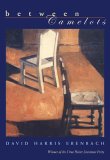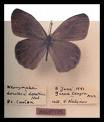 My friend Pamela Redmond Satran is a novelist, New York Times bestselling author, ninja web developer, and one-time magazine editor. Now she’s embarking on something entirely new:
My friend Pamela Redmond Satran is a novelist, New York Times bestselling author, ninja web developer, and one-time magazine editor. Now she’s embarking on something entirely new:
Two things inspired me to write my new novel, Ho Springs, online, day by day, instead of writing it for a conventional publisher the way I did my first five novels. Well, two things that are easy to explain.
The first was my husband, after watching the DVD of American Gangster, telling me he found the movie good enough but ultimately unsatisfying. “It was a movie,” he explained, “so you knew from the beginning that everything really interesting was going to happen to Denzel Washington and Russell Crowe, and that it was going to build to this big climax at the end.”
That was the problem with conventional novels too, I thought. They were predictable, limited and finite in form and scope. Wouldn’t it be more interesting to write – and read – a novel that unfolded in a way that was both more leisurely and more compelling, the way TV shows like Mad Men and The Wire did?
The second influence was creating my blog How Not To Act Old after no one wanted to buy it as a magazine article, turning it into a book and making that book a New York Times bestseller. That experience taught me that not only was it more fun and exciting to write without an editor between me and my readers, but my own creative instincts were often better than those of the traditional publishing world.
My experience writing five “real” novels and developing two big websites – I’m also a partner in the site nameberry.com, based on the ten baby name books I coauthored with Linda Rosenkrantz – put me in a unique position to create a piece of digital fiction that would combine the best of both worlds. Rather than writing episodic pieces, I wanted to create a novel that included such conventional elements as a character-driven story, causally-related scenes, and an extended plot that would unspool in unexpected ways, but in a form that could exist only online.
 My blueprint was a television series I’d created (but hadn’t sold) a few years ago, set in a fictionalized version of Hot Springs, Arkansas. A place-based story was perfect for an online novel, I thought, offering a wide range of characters and settings and the potential for stories to expand in an unlimited number of directions.
My blueprint was a television series I’d created (but hadn’t sold) a few years ago, set in a fictionalized version of Hot Springs, Arkansas. A place-based story was perfect for an online novel, I thought, offering a wide range of characters and settings and the potential for stories to expand in an unlimited number of directions.
The big problem was the name, Hot Springs. The url hotsprings.com was obviously taken. And then, driving one day, I had a eureka moment: hosprings.com, or Ho Springs. I was so excited I did a u-turn and drove right back home to track down and reserve the name.
From that moment on, I knew the idea was right. I wanted to create the site in wordpress, so it would be free and I’d have total creative control, but I couldn’t find a theme that included all the elements – videos, graphic windows that opened to places in the town and story, room for a big block of text.
I needed a designer – or, as it turned out, three designers. I had a vision for a logo that would look like all the letters were in realistic flames, with the T up in smoke, which called for a photoshop expert. My budget was zero, or as close to that as I could get. I was lucky to find Katie Mancinewho built me an amazing logo.
The only problem was, Katie said, she couldn’t design a good-looking site to go with that logo. Rather, she sold me on the concept “Vintage Tourist Guide,” which was great, but in the end that didn’t work out either. Katie finally ended up with the design you see now on the site, and my friend Dennis Tobenski, who’s really a composer, made the whole thing dance. Combined cost: under $1500, and several hundred gray hairs.
Weeks and then months were passing, during which I found a musician, Matt Michael, to write and record two original songs for the site, and also drafted several writer friends to create independent blogs from the characters’ viewpoints. But the only writing I was doing during this time was putting together the static content describing the characters and the settings.
A novelist creating a work for the web is not, then, just a writer, but a designer, a logician, a manager, a tech guy, a producer.
And then, once you do start writing – or at least, once I did – the process is different too. I suppose you could write one long story and parcel it out day by day, but the whole point for me was to create it as I went along, publish it immediately, to swing by the crook of my knees with no net below.
That’s the only way to feel the wind on your face, which is something you rarely feel when you’re writing a conventional novel, one that won’t be published for two years or maybe five, that no other person may even see for all that time, or maybe ever. Writing all my other novels, I’m a big planner, outlining the big story and even each individual scene, revising and reimagining, working on the same piece until I lose sight of where I started and when it will ever end.
With Ho Springs, I get up in the morning, having a vague sense of what I’m going to write about, from which character’s viewpoint, but letting myself be swayed by whatever I encounter between brushing my teeth and opening my computer. A David Sedaris story in an old New Yorker got one of my characters beaten one morning; an email from a writer friend inspired me to make a video of myself talking about what had influenced me that day.
It wasn’t until after I launched the site that I looked at what anyone else was doing in this arena. The only site I’ve found that’s similar is All’s Fair in Love and War, Texas, by the brilliant Amber Simmons, which makes me believe God saved me from that Vintage Tourist Guide idea. Penguin’s We Tell Stories is brilliant, but much more expensively and expertly produced than I could hope for, and more limited in writerly ambition. Visually-based web fictions that blow me away include Unknown Territories and The Flat on Dreaming Methods. But they’re movies, really, not novels.
Where is this project going? My ideal vision is that someone like HBO or a publisher with a production arm will buy it and produce it as a multimedia property, with a television and a web and a book element working together. I believe that this is how fiction will be written and published in the future, that this will become the new standard long after anyone remembers that Ho Springs ever existed.
Or I may take it down tomorrow and build something else. The excitement is in creating something. Holding it in your hands, or staring at it on a screen, holds so much less satisfaction.
Pamela’s personal site may be found here; with Ho Springs just around the corner. This post originally appeared on the site Noveir.














 We are frequently told, by the market and also by the novelists that the market promotes, to revere certain forms of writing over others. The publishing industry by necessity emphasizes profits, and novels sell better than collections of short stories, which means there’s pressure on fiction writers; often we start out writing short stories, on our own or in creative writing workshops, but we soon feel pressured to “graduate” to the novel. The short story is generally regarded as inferior, nothing more than a stepping stone. Yet there is no objectively best form of writing – only the form that suits us best.
We are frequently told, by the market and also by the novelists that the market promotes, to revere certain forms of writing over others. The publishing industry by necessity emphasizes profits, and novels sell better than collections of short stories, which means there’s pressure on fiction writers; often we start out writing short stories, on our own or in creative writing workshops, but we soon feel pressured to “graduate” to the novel. The short story is generally regarded as inferior, nothing more than a stepping stone. Yet there is no objectively best form of writing – only the form that suits us best. Can you give examples of some book covers you particularly like? Just a very few of the smart, clever covers I personally admire include all of David Sedaris, Lorrie Moore’s Birds of America, Nabokov’s Short Stories, J.M. Coetzee’s all-white novels (stark, spare, just like his writing). I have a small but cherished collection of book covers designed by greats like
Can you give examples of some book covers you particularly like? Just a very few of the smart, clever covers I personally admire include all of David Sedaris, Lorrie Moore’s Birds of America, Nabokov’s Short Stories, J.M. Coetzee’s all-white novels (stark, spare, just like his writing). I have a small but cherished collection of book covers designed by greats like 




